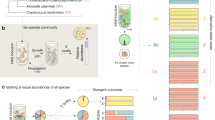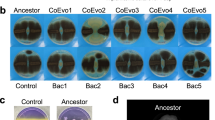Abstract
ALL organisms are dependent on a supply of heritable variation for future adaptive changes ; but the presence of free variation means that some members of the population show a poor adaptation to existing circumstances. The balance between present and future adaptation is thus conditioned by the amount of heritable variation which the population can maintain. This, in its turn, depends on the system of breeding or mating in force in the species. Where close inbreeding is in force the individuals tend towards a high degree of homozygosity. Heritable variation is then reduced to a low level, with the result that present adaptation is good but the prospect of future adaptation to changed circumstances poor. When, on the other hand, outbreeding is the rule, great genetical heterogeneity is maintained and in consequence the chances of good future adaptation are improved at the expense of present fitness1. In this way genes which control or affect the breeding system of a species have a profound effect on its genetical structure and evolutionary history. They have an adaptive value and will be subject to evolutionary changes.
This is a preview of subscription content, access via your institution
Access options
Subscribe to this journal
Receive 51 print issues and online access
$199.00 per year
only $3.90 per issue
Buy this article
- Purchase on Springer Link
- Instant access to full article PDF
Prices may be subject to local taxes which are calculated during checkout
Similar content being viewed by others
References
Mather, K., J. Genet., 41, 159 (1941).
Mather, K., and de Winton, D., Ann. Bot., N.S. 5, 297 (1941).
Buller, A. H. R., Bot. Rev., 7, 335 (1941).
Riley, H. P., Genetics, 21, 24 (1936).
Newton, D. E., Ann. Bot., 40, 105 (1926).
Huttig, W. Z. Bot., 24, 529 (1931).
Mather, K., unpublished.
Author information
Authors and Affiliations
Rights and permissions
About this article
Cite this article
MATHER, K. HETEROTHALLY AS AN OUT-BREEDING MECHANISM IN FUNGI. Nature 149, 54–56 (1942). https://doi.org/10.1038/149054a0
Issue Date:
DOI: https://doi.org/10.1038/149054a0
Comments
By submitting a comment you agree to abide by our Terms and Community Guidelines. If you find something abusive or that does not comply with our terms or guidelines please flag it as inappropriate.



